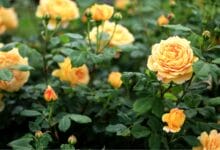Brinjal Plant Diseases and Their Natural Remedies, Chemical Controls, and Resistant Varieties.

Most Common Brinjal Plant Diseases and Their Control Methods.
Brinjal (Solanum melongena), also known as eggplant or baingan, is one of the most popular and widely cultivated vegetables in India. It’s a staple in many Indian households and provides good income to small and marginal farmers. However, brinjal cultivation is highly vulnerable to a range of diseases that can significantly reduce yield and quality, leading to heavy financial losses for farmers.
In this blog post, we’ll discuss the most common brinjal plant diseases, their impact on crops, natural and chemical methods for controlling them, recommended resistant varieties, and preventive strategies to reduce disease occurrences in the field.
1. Bacterial Wilt (Ralstonia solanacearum)
Symptoms:
- Sudden wilting of the plant without yellowing
- Blackening and rotting of the stem base
- Brown discolouration in vascular tissues
Why It’s Dangerous:
Bacterial wilt spreads fast under high soil moisture and warm temperatures, causing massive crop failures in a short span. It can persist in soil for years.
Natural Control:
- Use crop rotation with non-host crops like cereals
- Grow mustard or marigolds as trap crops
- Soil solarisation in summer reduces the bacterial population
Chemical Control:
- Streptocycline (100 ppm) spray and Copper oxychloride drench can be effective
- Use of bleaching powder (10 kg/acre) in irrigation water
Resistant Varieties:
- Arka Nidhi
- Arka Keshav
- Pant Samrat
2. Phomopsis Blight (Phomopsis vexans)
Symptoms:
- Circular spots on leaves with grey centres
- Fruit rots with soft, water-soaked patches
- Dry rot of seedling stems
Why It’s Dangerous:
It attacks every part of the plant — stem, leaf, and fruit — resulting in a low marketable yield and unfit produce.
Natural Control:
- Use disease-free seeds
- Practice field sanitation and remove infected debris
- Apply Trichoderma viride or Pseudomonas fluorescens as seed and soil treatment
Chemical Control:
- Spray Carbendazim (0.1%) or Mancozeb (0.25%) at 10-15 day intervals
Resistant Varieties:
- Arka Shirish
- Punjab Barsati
- Annamalai
3. Little Leaf Disease (Caused by Phytoplasma, spread by jassids)
Symptoms:
- Small, pale leaves with shortened internodes
- Bushy appearance due to excessive branching
- No flowering or fruiting
Why It’s Dangerous:
Little leaf disease renders the plant unproductive, causing up to 90% crop loss if not controlled early.
Natural Control:
- Remove and destroy infected plants early
- Use neem oil sprays (3%) to control vector insects
- Grow companion plants like coriander to repel jassids
Chemical Control:
- Spray Imidacloprid (0.3 ml/litre) or Thiamethoxam (0.25 g/litre) to control vector insects
- Tetracycline (500 ppm) foliar spray can suppress phytoplasma
Resistant Varieties:
- There are no fully resistant varieties, but moderately resistant lines, such as Arka Neelkanth, exhibit better field performance.
4. Powdery Mildew (Leveillula taurica)
Symptoms:
- White, powdery fungal growth on leaves
- Yellowing and drying of older leaves
- Poor fruit set due to plant stress
Why It’s Dangerous:
While not invariably fatal, this disease weakens the plant, reducing flowering and fruit yield.
Natural Control:
- Spray with cow milk (10%) or baking soda solution (5 gm/litre)
- Improve air circulation by proper spacing
Chemical Control:
- Use Sulphur dust or wettable sulphur spray
- Hexaconazole or Myclobutanil can also control fungal growth
Resistant Varieties:
- Few true resistant varieties; however, early maturing types like Pusa Purple Cluster escape severe infection
5. Alternaria Leaf Spot (Alternaria melongenae)
Symptoms:
- Brown concentric rings on leaves
- Defoliation under severe attack
- Premature death of seedlings in the nursery stage
Why It’s Dangerous:
It affects leaf area, reducing photosynthesis, and results in stunted plant growth.
Natural Control:
- Grow brinjal in well-drained soil
- Apply Trichoderma-based compost
- Use compost tea sprays to enhance microbial competition
Chemical Control:
- Spray Mancozeb or Chlorothalonil at 10-day intervals
Resistant Varieties:
- Arka Kusumakar
- Punjab Neelam
How to Reduce Disease Occurrences in Brinjal Fields
Even the best controls can fall short if proper cultural practices are not followed. Here’s how farmers can proactively reduce disease incidences:
1. Use Certified, Disease-Free Seeds
- Always use seeds from trusted sources or government-certified suppliers
- Treat seeds with bio-agents like Trichoderma viride or Pseudomonas fluorescens
2. Adopt Crop Rotation
- Avoid monocropping of brinjal year after year
- Rotate with legumes, cereals, or marigolds to break disease cycles
3. Improve Field Sanitation
- Remove and burn infected plant debris
- Keep irrigation channels weed-free and clean
4. Maintain Proper Plant Spacing
- Avoid overcrowding
- Good airflow between plants reduces humidity-based diseases
5. Use Raised Beds and Drip Irrigation
- Reduces the chances of waterlogging and root infections
- Saves water and reduces disease-conducive conditions
6. Integrated Pest and Disease Management (IPDM)
- Combine biological, cultural, and chemical methods for long-term success
- Monitor the field regularly for early detection
Final Thoughts
Brinjal farmers often suffer enormous losses not just due to one disease, but also due to multiple disease interactions, usually worsened by poor crop hygiene and unfavourable climate conditions.
However, by adopting integrated management practices, utilising resistant varieties, and regularly monitoring the field, farmers can significantly reduce disease outbreaks.
Switching to bio-agents, trap crops, and crop rotation, along with timely intervention using organic and chemical sprays, can help protect crops and profits.
If you’re a brinjal grower or agri-entrepreneur, investing in early disease prevention can be the difference between a failed season and a profitable harvest.
Have you faced any of these brinjal diseases in your fields? Share your experience or control strategies in the comments below!
Let’s build a healthier and disease-free brinjal farming community together.








